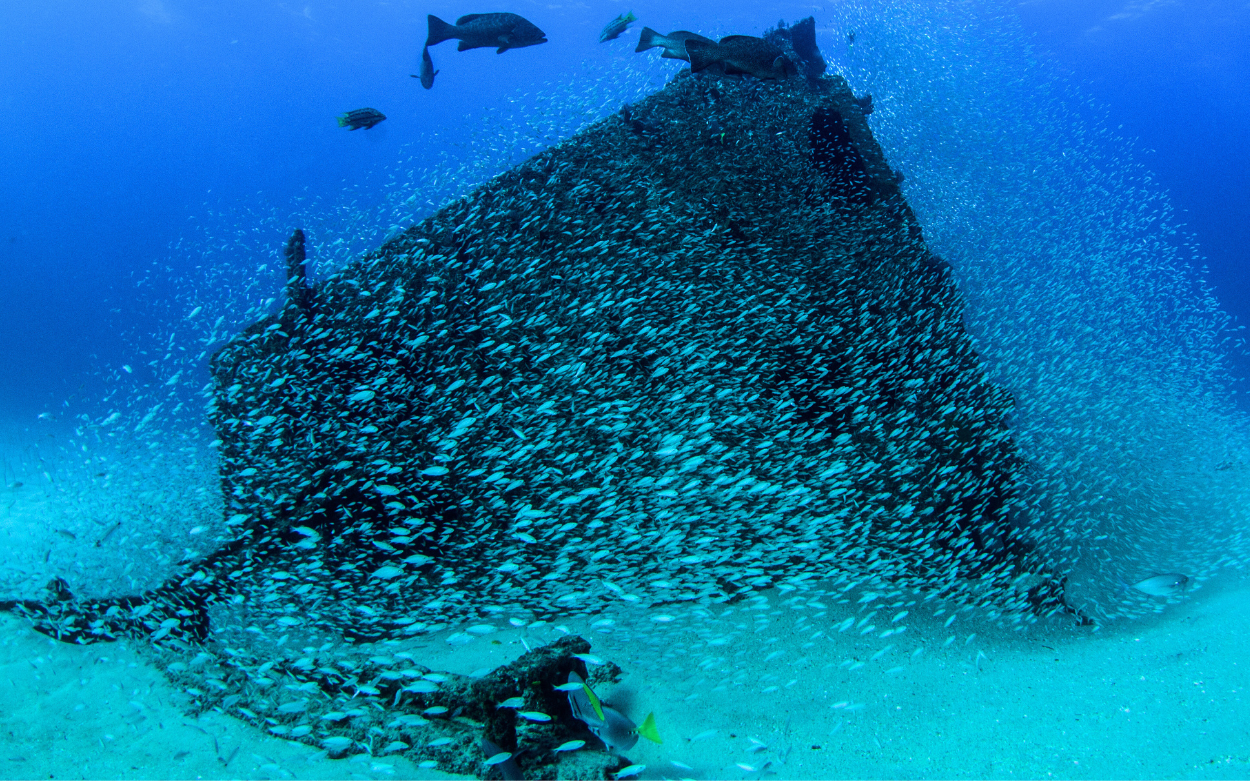Celebrating the 22nd anniversary of the UNESCO Convention on the Protection of the Underwater Cultural Heritage

On 2 November 2001, the UNESCO Convention on the Protection of the Underwater Cultural Heritage was adopted by the 31st session of the General Conference of UNESCO. Twenty two years later, ICOMOS takes this opportunity to interview Christopher Underwood, President of the ICUCH (ICOMOS International Committee on Underwater Cultural Heritage) and reflect on the place our societies give this precious heritage.

How did ICUCH come to light?
*The creation of ICUCH was in response to concerns raised with UNESCO Culture Secretary by ICOMOS Australia member, Jon Wormesley, in 1988 about treasure hunting activities in Australia and internationally-placed sites, including RMS Titanic – its protection remaining contentious even in 2023. Wormesley urged UNESCO to develop an international convention. ICOMOS International, noting Australian interest, was considering ‘preparing the ground for an international Committee’ needing the help of Henderson and other practitioners. ICOMOS Australia was encouraged, under the auspices of ICOMOS, to establish an international committee on underwater cultural heritage. ICOMOS-ICUCH became an ICOMOS Scientific committee in 1991 with Graeme Henderson as its first chair and with Western Australia Maritime Museum as the administrative focus. ICUCH’s first mandate was to create a ‘Charter to guide the management and protection of underwater cultural resources’. The ICOMOS Charter on the Protection and Management of Underwater Cultural Heritage was formalised in Sofia, 1996. Subsequently, ICUCH members were very much involved in the development of the Convention on the Protection of the Underwater Cultural Heritage (UNESCO 2001), noting that the basis of the Annex Rules of the 2001 Convention is the ICOMOS Charter. ICUCH remains a strong advocate for the 2001 UNESCO Convention and the ICOMOS Charter.
*Abstracts from a lecture by Graeme Henderson during the AIMA/ICUCH conferences 2023
You are active all over the world as a project director, excavator, international programme trainer, State adviser… what is the best part of your job(s)?
I’ve been very fortunate to have had the opportunity to work in many countries across the spectrum of activities mentioned in your statement. Deciding what is the best part is very difficult.
I still love and get enormous satisfaction, when opportunity arrises, from excavating a site.
In many respects this is the foundation of what I do in other contexts; encouraging research and public access when applicable and with appropriate resources, but also advocating against activities where resources are inadequate or where the beneficiaries are aimed at commercial gain, rather than for being considered a public good. I’m passionate about the concept of shared heritage and wanting others to understand the importance of underwater cultural heritage in enriching our lives. From this perspective the UNESCO courses aimed at building or strengthening capacity, which remains low in some regions, provide a perfect platform to promote this aspiration. Sharing my experience is a personal obligation, none more so than the excavation and recovery of the Mary Rose, which from very small beginnings has become a world class museum. The project continues to demonstrate what underwater cultural heritage can contribute to the knowledge of our past and importantly for the public in the present and future.
What are some challenges underwater cultural heritage currently faces?
Perhaps the biggest challenge remains that underwater cultural heritage is mostly ‘out of sight and out of mind’, noting that Augmented Reality and 3-D scanning have improved the possibilities for the public to visualise underwater sites. There are serious concerns and challenges relating to Climate Change. Rising sea-levels will exacerbate tidal ranges and increase associated current strengths, ultimately accelerating erosion processes. The combined impacts represent a significant existential threat to the preservation of underwater cultural heritage, particularly in coastal or shallow water environs. More science is required to fully understand the impacts and remediation.
Industrialised commercial salvage remains an issue, with recent activities involving the recovery of entire ships for their metal scrap values, including warships seen as the last resting place of their crew.
An additional indirect impact is the redirection of government resources to other priorities, resulting in a reduction in public spending on heritage and cuts to grant programmes. It is already known that the sustainability of some museums and NGOs is at risk, putting more pressure on private finance and philanthropy to fill funding gaps. Despite these significant challenges, ICUCH remains fully committed to ensuring that UCH has social visibility and contributes to important international programs, such as the UN’s Ocean Decade for Sustainable Development 2021-2030.
Over recent years ICUCH’s concerns have included Deep Ocean Mining, which threatens the sustainability of UCH, but also Oceanic Ecosystems. ICUCH is working with marine stakeholders to raise awareness of this issue and advocate for improved legal protection and/or codes of best practice.